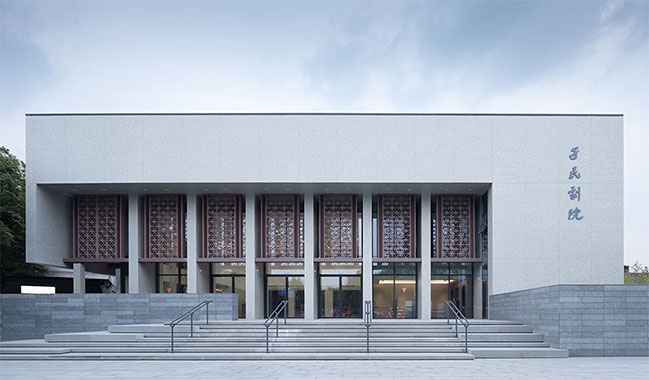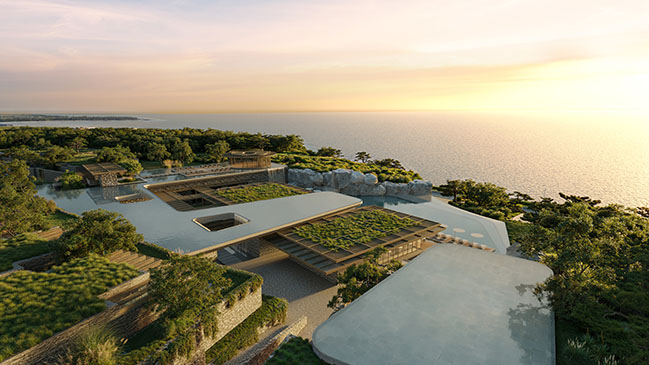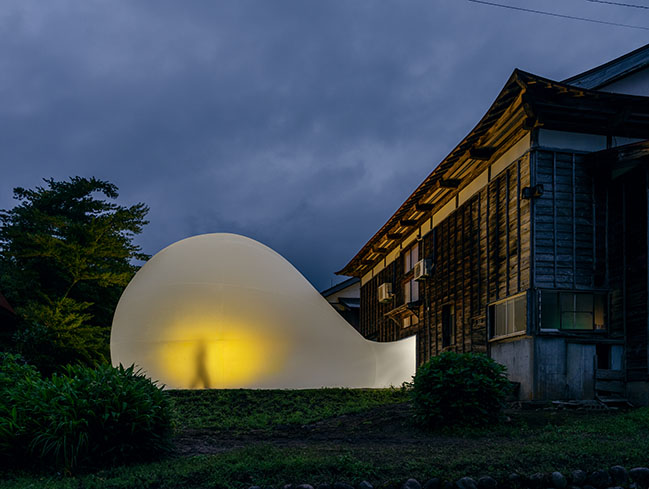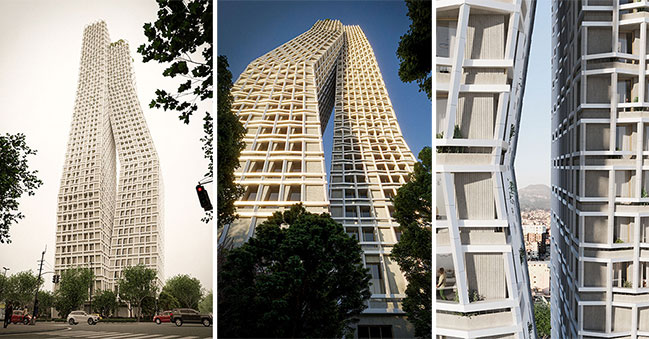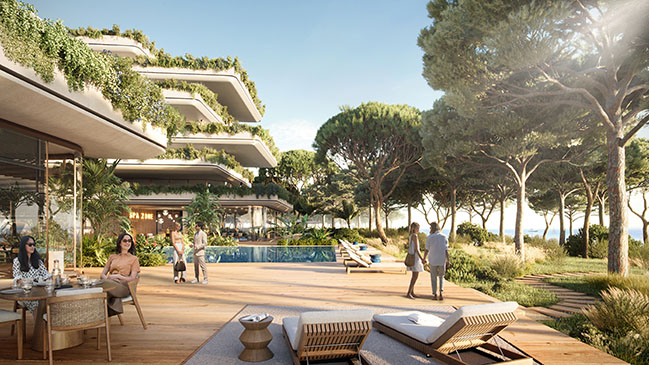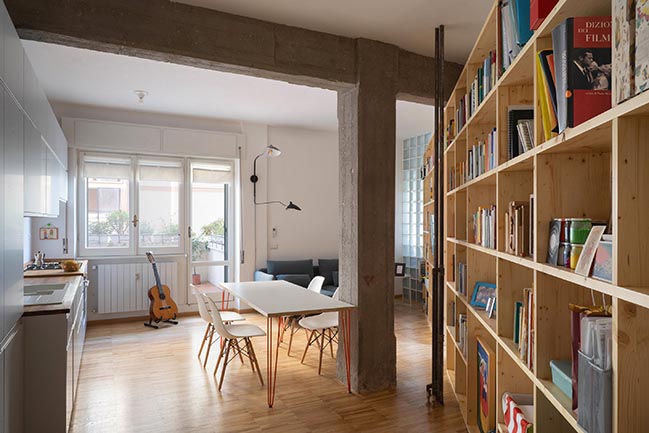08 / 08
2024
The 60,000 m2 Suzhou Museum of Contemporary Art is conceived as a village of 12 pavilions, offering a modern interpretation of the elements that have defined the city’s urbanism, architecture, and landscape for centuries. The museum is scheduled for completion in 2025...

> NOT A HOTEL Setouchi by BIG | Bjarke Ingels Group
> Freedom Plaza by BIG | Bjarke Ingels Group
From the architect: Designed by BIG, ARTS Group and Front Inc., Suzhou Museum of Contemporary Art is part of the city’s development of the Jinji Lake and reimagines the traditional garden ‘lang,’ 廊 - a line that traces a path - framing gardens with outdoor art installations and coalescing as pavilions. The design of the museum showcases Suzhou’s garden tradition and takes visitors on a journey through art, nature, and water.

The museum’s main design element is the ribbon of the roof, which extends into a pattern of eaves that double as sheltered walkways through the site. Knots in the thread of walkways frame pavilions, and as a result, the museum’s architecture entwines through the landscape, tying water to land, city to nature, and people to history. The draping walkways further extend out into Jinji Lake, which can be regarded from above while on the Suzhou Ferris wheel.

Four of the museum’s pavilions comprise the main gallery experience of the Suzhou Museum of Contemporary Art, and the five remaining pavilions feature a multifunction hall for events and lectures, a theater, restaurant, and grand entrance.

“Our design for the Suzhou Museum of Contemporary Art is conceived as a Chinese garden of pavilions and courtyards. Individual pavilions are woven together by glazed galleries and porticoes, creating a network of interconnected sculpture courtyards and exhibition spaces. Weaving between the Ferris wheel legs, the museum branches out like a rhizome, connecting the city to the lake. The result is a manmade maze of plants and artworks to get lost within. Its nodular logic only becomes distinctly discernible when viewed from the gondolas above. Against the open space of the lake, the gentle catenary curvature of the roofs forms a graceful silhouette on the waterfront. Viewed from above, the stainless roof tiles form a true fifth facade.” - Bjarke Ingels, Founder and Creative Director, BIG – Bjarke Ingels Group
Defined by sloping roof eaves, each pavilion’s façade is made of rippled and curved glass, as well as warm-toned stainless steel that reflects the garden colors. The pavilions are connected above- and underground via bridges and tunnels, offering the museum flexibility to plan exhibition flow according to seasons and exhibited art pieces. The paths leading through the site will be covered with natural stone.

“The Suzhou Museum of Contemporary Art is a tribute to the rich garden heritage of Suzhou. We envision the '廊,' a traditional element of Suzhou gardens, gracefully winding through the landscapes and transforming into pavilions. In doing so, it frames the contemporary gardens, making them an integral part of the exhibition, as significant as the artwork within.” - Catherine Huang, Partner in Charge, BIG – Bjarke Ingels Group

Arriving at the museum, the visitor will be faced by an expansive, welcoming plaza in front of the Visitor Centre, which doubles as the entry point to the museum. From there, visitors will be able to proceed with their visit inside or along the exterior, through the gardens and to the water bank. Visitors can follow a continuous path through the museum’s interior, or follow one of those it feeds into, allowing one to wander depending on the aim or weather conditions of the visit. A home of all culture, the Suzhou Museum of Contemporary Art will also house a theatre in one of its pavilions.

The museum’s landscaping acts as a public space to the front of Jinji Lake through a series of interconnected gardens, ensuring a rich public realm surrounding the museum. Sculptures by contemporary artists will offer Suzhou’s citizens a cultural experience outside the museum’s opening hours. The individual gardens will gradually change from mineral to green to finally water-themed planting, as the visitors move towards the waterfront.
Suzhou Museum of Contemporary Art follows the Chinese sustainability certification, GBEL Green Star 2, including both technical and social approaches to sustainability.

Architect: BIG | Bjarke Ingels Group
Client: Suzhou Harmony Development Group Co. Ltd
Location: Suzhou, Jiangsu, China
Year: 2024
Collaborators: ARTS Group Co., Ltd. [中衡设计集团股份有限公司], Front Inc., Shanghai Shuishi Landscape Design Co.,Ltd [上海水石景观环境设计有限公司], Rdesign International Lighting [上海瑞逸环境设计有限公司]
Partners-in-Charge: Bjarke Ingels, Catherine Huang
Project Manager: Molly Hsiao Rou Huang
Project Architect: Tyrone Cobcroft, Kekoa Charlot, Tseng-Hsuan Wei
Design Lead: Matteo Pavanello, Christian Vang Madsen, Athena Morella
Team: Chih-Han Chen, Tomasz Jakubowski, Aileen Koh, Amanda Lima Soares Da Cuncha, Arda Özker Cincin, Cris Guoyu Liu, Desislava Georgieva, Eddie Can, Federico Martínez De Sola Monereo, Filip Fot, Filippo Cartapani, Finn Nørkjær, Haochen Yu, Huiyao Fu, Izabella Banas, Jakub Kulisa, Jan Magasanik, Jana Semaan, Jason Cheuk Hei Lee, Jiaqi Yang, Jiawen Huang, Julia Wilkosz, Jurica Pajic, Mathis Paul Gebauer, Megan Nhat Xuan Dang, Narisara Ladawal Schröder, Ole Elkjær-Larsen, Oliver Steen, Paula Domka, Pei Huang, Philip Kaefer, Pheobe Cowen, Riad Tabbara, Romain Thijsen, Shu Du, Sol Anaid Chaocon Levin, Tarek Shater, Todor Todorov Rusev, Xavier Thanki, Yanis Amasri Sierra, Yihan Liu, Yingying Guan, Zahra Khademi, Zhonghan Huang, Zuzana Faskova
BIG Engineering: Andrea Hektor, Adele Scampoli, Alexander Gale Heiede, Andreas Bak, Bjarke Koch-Ørvad, Cristina Minguela, Ingrid Albina Oliva Lampa, Janis Bronka, Jens Max Jensen, Jesús Fernández Lindqvist, Jonathan Russell, Kannan Selvaraj, Konstantinos Koutsoupakis, Maria Capuozzo, Miles Treacy, Thomas Lejeune, Tim Christensen
Rendering: ATCHAIN, BIG, Bucharest Studio
Photography: StudioSZ Photo / Justin Szeremeta





Suzhou Museum of Contemporary Art by BIG | Bjarke Ingels Group celebrates topping out
08 / 08 / 2024 The 60,000 m2 Suzhou Museum of Contemporary Art is conceived as a village of 12 pavilions, offering a modern interpretation of the elements that have defined the city's urbanism, architecture, and landscape for centuries. The museum is scheduled for completion in 2025...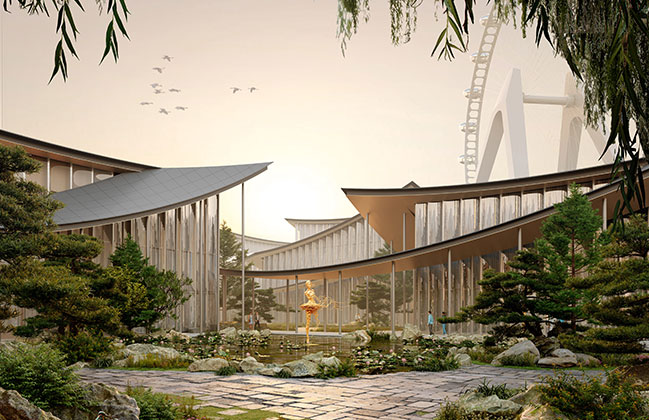
You might also like:
Recommended post: Diagonal House in Rome by piano b architetti associati
